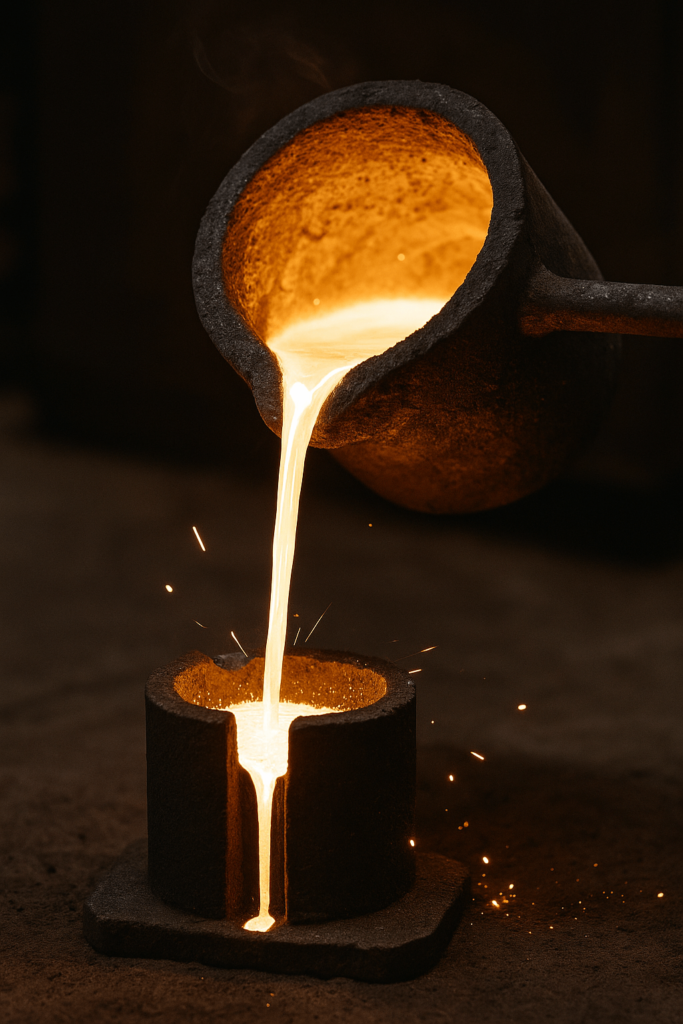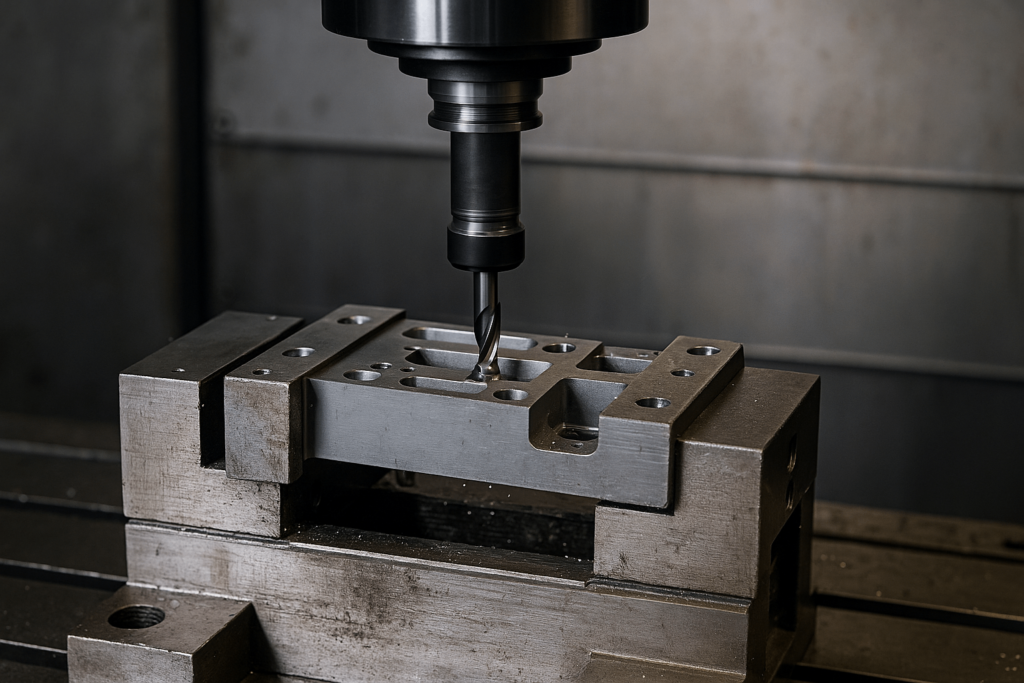Introduction
For global wholesale buyers in industries like automotive, energy, and heavy equipment, selecting between casting and forging is more than just a technical decision. It directly impacts production lead time, component reliability, long-term cost efficiency, and ultimately, customer satisfaction.
At YISHANG, we support OEM and ODM buyers with practical, data-backed insights into metal processing. This article breaks down the key factors you need to evaluate when sourcing forged or cast components at scale. We explain performance trade-offs, volume economics, and structural considerations—so you can make confident, informed procurement decisions that match your business goals.
Understanding the Fundamentals: What Is Casting? What Is Forging?
Casting is the process of pouring molten metal into a mold, allowing it to cool and solidify into a specific shape. There are several casting types including sand casting, investment casting, and aluminium die casting. Each has its place depending on shape complexity, volume, and budget. For example, the aluminium casting process is preferred for complex components like housings and brackets due to its low tooling cost and fast turnaround.
Casting, defined by its design flexibility and low entry cost, is especially suitable for moderate-strength applications and decorative parts. In the aluminum die casting industry, alloy die casting offers excellent repeatability and reduced machining needs. Many buyers working with aluminum die casting suppliers value the ability to produce thin-walled, corrosion-resistant components efficiently.
Forging, on the other hand, shapes metal through compressive force—often at high temperatures. This results in superior grain structure, minimized porosity, and significantly higher fatigue strength. Closed-die forging is widely used for high-stress parts like axle shafts and crank arms. When choosing between casting vs forging, understanding the microstructure is crucial to performance longevity.
Buyers often opt for forging when part reliability and directional load strength matter more than geometry complexity. YISHANG supports both methods, advising clients on the best approach based on technical drawings, load specs, and batch volume.

Performance Comparison: Casting vs Forging – What’s at Stake?
| Property | Casting | Forging |
|---|---|---|
| Microstructure | Dendritic, may include voids | Dense, directional grain flow |
| Fatigue Strength | Medium | Up to 37% higher |
| Design Freedom | Excellent for complex shapes | Limited to compact geometries |
| Typical Tolerance | +/- 0.5 mm | +/- 0.2 mm after machining |
| Tooling Cost | Lower | Higher initial setup |
| Best Use Cases | Hollow/complex parts | Load-bearing parts |
Forged parts exhibit stronger mechanical properties due to uniform grain structure. This makes them ideal for structural components in machinery, transportation, and industrial tools. Buyers sourcing forged crankshafts or tie rods often prioritize durability and lifecycle cost over upfront pricing.
Casting excels where intricate shapes or lightweight enclosures are required. For example, in the automotive casting market, aluminum based castings in the automotive sector help achieve weight reduction targets while meeting form factor constraints.
At YISHANG, we supply both aluminum die castings and forged steel parts, each accompanied by dimensional reports and batch traceability. This lets you select the right method based on end-use, delivery time, and certification requirements.
Pros and Limitations – Matching the Process to Your Needs

Casting offers unmatched flexibility in design. Aluminium die casting components can integrate bosses, ribs, and complex internal passages in a single operation. With mould fabrication times of 5–10 days and low tooling cost, it’s ideal for small-to-mid production runs.
However, cast parts may suffer from shrinkage porosity and inconsistent mechanical performance if not properly managed. For instance, a small void in a pressure-retaining casting may lead to premature cracking or leakage during use. That’s why YISHANG provides vacuum casting options and X-ray quality checks to ensure each aluminum casting part meets buyer expectations—particularly important when sourcing from overseas.
Forging delivers mechanical consistency. Especially in carbon steel, forging improves toughness and elongation under stress. Components like forged suspension arms or hydraulic cylinder ends demonstrate lower failure rates and better wear resistance over time. For parts used in dynamic or rotating applications, forging reduces the risk of failure under repetitive stress.
That said, forging involves higher upfront investment. Tooling for automotive die casting may cost less than forging dies, especially for batches below 1,000 units. For buyers scaling up beyond 10,000 pcs/year, forging becomes the long-term cost-efficient option.

Procurement-Focused Decision Guide
When evaluating a supplier or method, consider how the part will perform, not just what it looks like. Buyers working on aluminium casting projects or custom forging orders should assess:
Functionality Under Load: Will this part face dynamic stress? If yes, forging is often safer.
Geometry Complexity: Does the shape require undercuts, cavities, or aesthetic contours? Then casting makes more sense.
Batch Size: For batches under 500 units, casting offers cost advantages. For larger volumes, forging pays off over time.
Material: Some alloys like 4130 carbon steel casting perform better forged. Aluminum alloy die casting is more effective for low-density, corrosion-resistant needs.
Lead Time & Sampling: Casting tools are quicker to produce and easier to modify during prototyping. YISHANG supports rapid tooling and delivers samples within 7–10 working days.
We help clients conduct cost-performance reviews and offer hybrid options combining casting and CNC machining or forging with post-treatment. All services are aimed at shortening decision cycles and increasing first-batch accuracy.
Real-World Scenarios from Global Buyers
Electric Scooter Chassis (5,000 pcs)
Aluminium die casting parts reduced welding needs.
Yield rate: 98.6% with minimal post-processing.
Hydraulic Cylinder End Cap (10,000 pcs)
Closed-die forging ensured burst resistance under 300 bar.
Dimensional accuracy held within +/-0.15 mm across batches.
Battery Module Housing (3,500 pcs)
Aluminum die casting product replaced three-piece assembly.
Anodized surface passed 500-hour salt spray test.
Crankshaft Segment (50,000 pcs/year)
Forged SAE 1045 steel with induction hardening.
Service life exceeded OEM requirements by 32%.
These examples illustrate how part function, production scale, and performance expectations guide the casting vs forging decision for wholesale buyers. Based on industry data, failure rates in high-cycle components decrease by up to 40% when forged rather than cast, especially under cyclic loading.
Industry Trends That Affect Sourcing Choices
The rise of automated die casting and hybrid production is reshaping the way manufacturers approach tooling and quality. Combining aluminum pressure die casting with robotic trimming and CNC machining shortens cycle time and improves consistency. Buyers benefit from shorter lead times and more scalable output.
Sustainability is also top of mind. Forging generates less waste by optimizing material flow. Meanwhile, aluminium casting suppliers are investing in closed-loop recycling systems and aluminium grades for casting that balance performance with reusability.
YISHANG’s facilities support environmentally responsible sourcing and comply with ISO 9001, RoHS, and REACH. Each order can include PPAP documentation, alloy certification, and batch-level traceability, all of which are highly valued by procurement professionals in regulated industries.
Frequently Asked Questions
Q: Is forging stronger than aluminum die casting?
A: Yes, in terms of tensile and fatigue strength. But advanced die casting can meet structural needs in many applications.
Q: Can I source both forged and cast parts from YISHANG?
A: Absolutely. We manufacture both, and integrate CNC machining, surface finishing, and assembly in-house.
Q: What’s the MOQ for aluminum casting molds?
A: As low as 100 pcs depending on the part. Forging typically starts at 500 pcs.
Q: What certifications do you offer?
A: ISO 9001, RoHS, and optional ASTM/PPAP/REACH depending on region and industry.
Conclusion
Choosing between casting and forging is ultimately about aligning performance needs with production realities. Wholesale buyers must weigh geometry, scale, lead time, and mechanical load against cost per part and total ownership value.
YISHANG supports clients across 50+ countries with tailored recommendations and end-to-end metal processing. Whether you need 200 aluminium die casting components or 50,000 forged shafts, we provide technical guidance, consistent quality, and full compliance.
